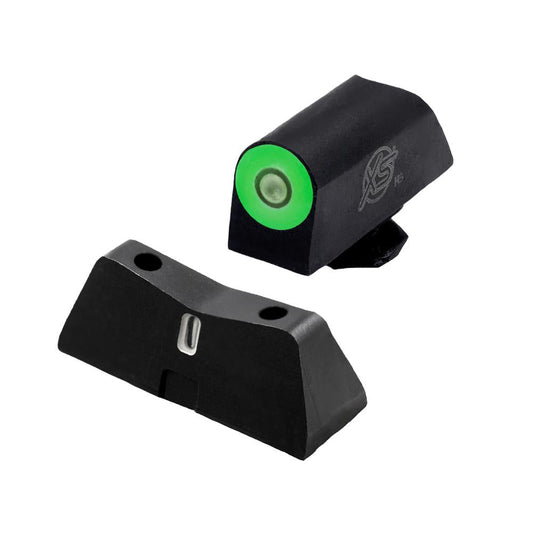

If you're looking to elevate your Glock's performance in low-light scenarios, the XS Sight DXT2 PRO Series Big Dot Handgun Night Sights are your go-to solution. Designed specifically for Glock 42, 43, 43X, and 48 models, these night sights feature a unique Glow Dot that absorbs ambient light, ensuring you have a bright, easily identifiable sight picture when it matters most. The convex design maximizes light absorption, making the tritium-powered front sight exceptionally visible, whether in day or night conditions.
With the DXT2 sights, you get a simple dot-the-i sight picture that allows for quick and accurate target acquisition. The shallow V-shaped rear sight enhances your field of view, perfect for high-stress situations. Plus, the durability of these sights is unmatched, featuring an upgraded BlackNitride surface finish that resists corrosion. Don't settle for less; invest in the XS Sight DXT2 PRO and enjoy unparalleled visibility on your defensive Glock.
Key Features:
- TRITIUM POWERED: Provides visible index points for quick target acquisition in low light.
- BLACKNITRIDE FINISH: Enhances durability with superior corrosion resistance, ensuring longevity.
- GLOW DOT TECHNOLOGY: Absorbs surroundings light to glow brightly in low visibility conditions.
- SIMPLE DOT-THE-"I" SIGHT PICTURE: Facilitates faster sight alignment for improved accuracy.
- CNC MACHINED STEEL: Made from durable American materials for lasting performance.
- SHALLOW V REAR SIGHT: Improves field of view for rapid target acquisition under stress.
- OPTIMIZED FOR DEFENSIVE SHOOTING: Designed to address challenges of aging eyes and low-light engagements.
- COMPATIBLE WITH VARIOUS MODELS: Specifically designed for Glock 42, 43, 43X, and 48 for a perfect fit.
Technical Specifications Table
| Specification | Details |
|---|---|
| Compatibility | Glock 42, 43, 43X, 48 |
| Material | CNC Machined Steel |
| Finish | BlackNitride |
| Sight Type | Night Sight |
| Glow Color | Green |
What’s in the Box?
- Front and rear tritium night sights
- Installation instructions
- Customer support information
Customer Reviews
"These sights are a game changer for night shooting! The green glow is incredible!"
"Perfect fit on my Glock 43. Quick installation and very visible!"
"Highly recommend for anyone serious about defensive shooting!"
FAQ
How do the DXT2 sights perform in low-light conditions? The DXT2 sights feature tritium technology, which allows them to emit a bright glow in low-light scenarios, making target acquisition fast and efficient.
Are these sights compatible with other Glock models? These sights are specifically designed for Glock 42, 43, 43X, and 48, ensuring a perfect fit and function for these models only.
How durable are the DXT2 sights? With a BlackNitride surface finish, these sights offer enhanced corrosion resistance and durability, making them ideal for daily carry and use.
Similar Models
Looking for the perfect night sights? Explore our extensive XS Sights lineup, including options tailored for other Glock models and additional accessories. Discover the full collection for exceptional visibility and performance tailored to your personal defense needs.
You May Also Like
Here’s some of our most similar products people are buying. Click to discover trending style.






